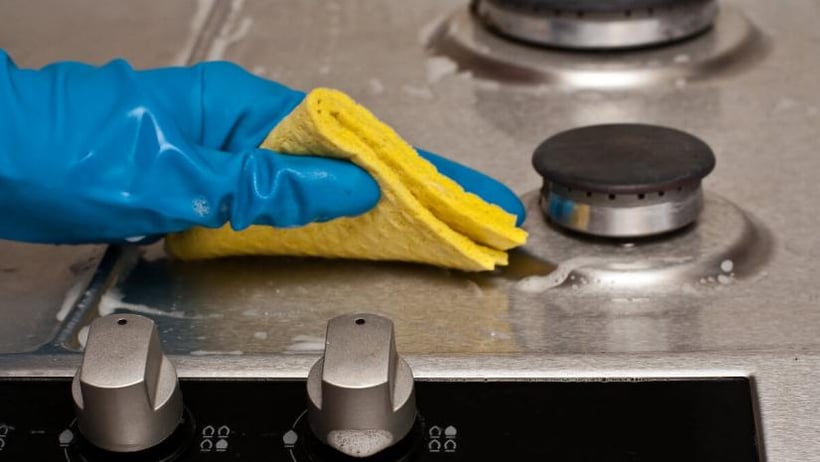
Definitions of cleaning, sanitizing and sterilizing
Cleaning
Cleaning is designed to remove all visible dirt, soil, chemical residues and allergens from equipment, utensils and work surfaces.
Sanitizing
Sanitizing is designed to reduce the number of microorganisms to a safe level. Sanitizing is performed after cleaning. Unclean surfaces will reduce the effectiveness of sanitizing. All surfaces that come into contact with food must be cleaned and sanitized regularly.
Sterilizing
Sanitizing should not be confused with sterilizing. While sanitizing reduces microorganisms to a safe level, sterilizing removes all microorganisms from an item.
Sterilizing is not often performed in a commercial kitchen environment, but is used in places like hospital operating rooms.
What to clean & sanitize
As a general rule, everything that has had direct contact with food needs to be cleaned and sanitized.
Examples of items that may have had direct contact with food include crockery, glassware, cutlery, pots and pans, serving utensils, cooking equipment, chopping boards, kitchen surfaces and counters.
Other items – that have not had direct contact with food – must be cleaned, but not necessarily sanitized. Such items may include chairs, tables, floors, doors, walls and windows. Don’t forget to also clean hard-to-reach areas such as under cushions, around light fittings and blinds or drapes. Drains and restrooms need to be cleaned at least once a day.
The cleaning schedule in your Food Safety Plan should include instructions for when and how to clean floors, sinks, walls, counters, chairs and tables.
The importance of cleaning and sanitizing
There are three main reasons why cleaning and sanitizing is important:
- Cleaning and sanitizing helps to prevent pest infestations.
- Cleaning and sanitizing helps your business stay compliant with food safety laws and regulations.
- Cleaning and sanitizing helps to protect customers and employees from health risks like food poisoning and allergic reactions.
Food poisoning can cause severe illness or even death. Frequent, rigorous cleaning and sanitizing will help to prevent this from happening in your restaurant or other food business.
To ensure effective cleaning and sanitizing is being done in your business, we recommend enrolling your Food Handlers into a food safety course. Many food safety courses — including the CIFS Food Handler Certification Course — can be completed online in less than a day.
Download the CIFS Guide to Effective Cleaning & Sanitizing for more information about what, when and how to clean and sanitize surfaces and equipment in your food business to prevent food-borne illness and other serious food risks.




